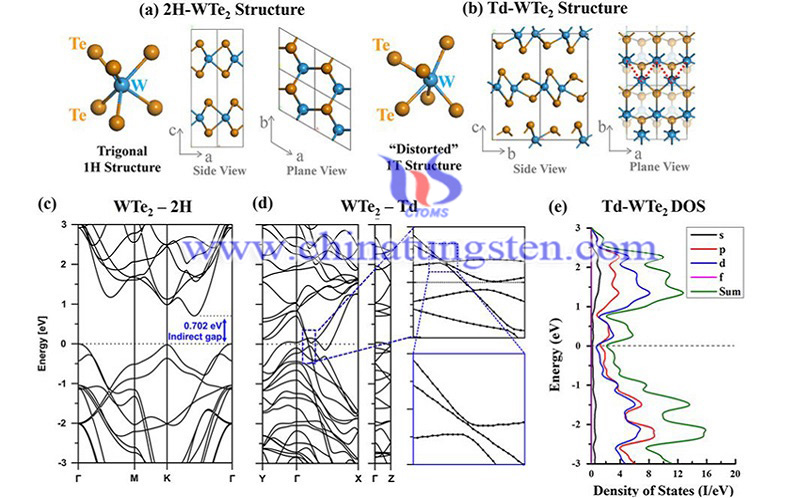Australian Scientists Observe Metal Ferroelectricity in WTe2 for The First Time
- Details
- Category: Tungsten's News
- Published on Wednesday, 10 July 2019 10:30
Australian scientists have discovered the mechanism of metal ferroelectricity in WTe2, after the systematic research on crystal structure, electron transport measurement and theoretical considerations. It is proved that the ferroelectric state can be changed under external electric bias.
According to a Science Daily website reported on July 6, 2019, a paper published in the "Science Advances", researchers at the University of New South Wales in Australia described the first observation of natural ferroelectric metals. This study demonstrates a natural metal with a bistable and electrically switchable spontaneous polarization state for the first time, and the electrically switchable spontaneous polarization state is a sign of ferroelectricity.
"We found natural metallicity and ferroelectricity coexist in bulk crystalline tungsten ditelluride (WTe2) at room temperature," said Pankaj, author of the study. Through systematic researches, it is proved that the ferroelectric state can be switched under external electric bias and explains the mechanism of "metal ferroelectricity" in WTe2.

Ferroelectricity can be considered an analog of ferromagnetism. Ferromagnetic materials show permanent magnetism, and in non-technical terms it is a "magnet" with north and south poles. Ferroelectric materials also exhibit similar electrical properties, referred to as permanent polarization, it originated from electric dipoles and composed of terminals or poles that carry equal amounts with opposite charges. In ferroelectric materials, these electric dipoles are present in the unit cell structure and produce a permanent electric dipole moment.
This self-generating dipole moment can be repeatedly converted between two or more equivalent directions under an applied electric field. This is a property used in many ferroelectric technologies, such as nano-computer memory, RFID cards, Medical ultrasound transducers, infrared cameras, submarine sonar, vibration and pressure sensors, and precision transmissions.
In general, ferroelectricity is observed in insulators or semiconductors rather than in metallic materials because the conducting electrons in the metal shield the static internal field caused by the dipole moment.
The bulk single crystal tungsten ditelluride (WTe2) belongs to a material called transition metal disulfide (TMDCs), its metal behavior conducted by spectral electrical transmission measurement, conductive atomic force microscopy (c-AFM). Piezoelectric response force microscopy (PFM) is used to draw the polarization maps and detect lattice distortion caused by the applied electric field.
Ferroelectric domains are regions with oppositely oriented polarization directions that can be directly observable in newly cut WTe2 single crystals. Spectral polarization PFM measurement was performed using the top electrode in the geometric capacitor to demonstrate the switching of the ferroelectric polarization.
This study is subsidized by the Australian Research Council through the ARC Center of Excellence's Future Low Energy Electronic Technology (FLEET). Part of the work used facilities at the Australian National Manufacturing facility in New South Wales and was assisted by the Australian Government Research Training Program Scholarship Program.
Ferroelectric in WTe2 and ferroelectric materials have been largely studied and supported by Australian FLEET because ferroelectric materials can be used in low-energy electronics beyond CMOS technology.
- Tungsten Manufacturer & Supplier, Chinatungsten Online: www.chinatungsten.com
- Tungsten News & Prices of China Tungsten Industry Association: www.ctia.com.cn
- Molybdenum News & Price: news.molybdenum.com.cn
- Tel.: 86 592 5129696; Fax: 86 592 5129797; Email: sales@chinatungsten.com



 sales@chinatungsten.com
sales@chinatungsten.com